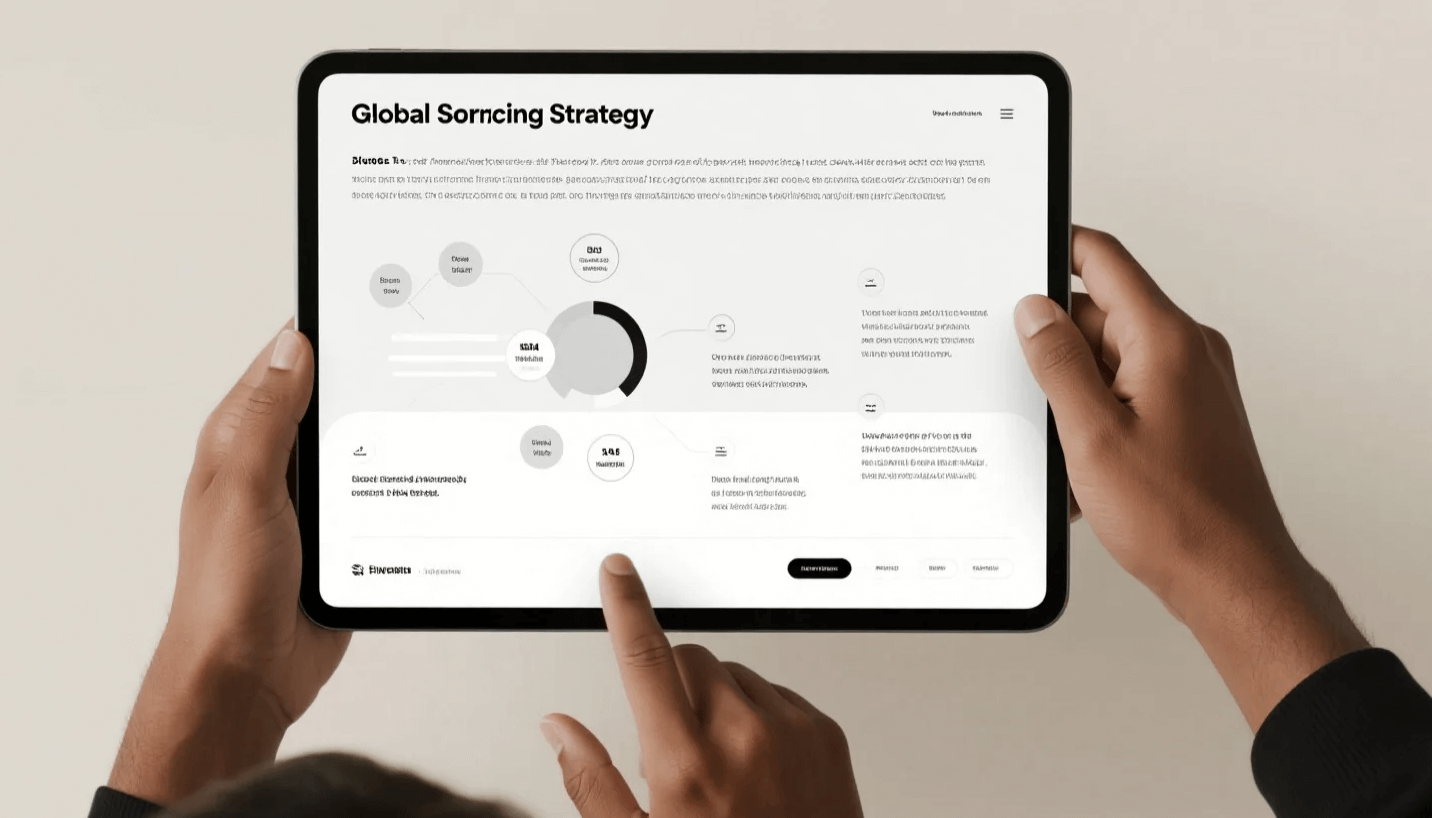In today’s interconnected marketplace, procurement professionals face both unprecedented opportunities and unique challenges. Global sourcing strategy has emerged as a powerful approach to access high-quality products, reduce costs, and build a more resilient supply chain. But what exactly does it entail, and why is it so crucial for procurement teams aiming to stay competitive?
This article explores the meaning, benefits, challenges, and best practices of global sourcing strategy—offering actionable insights for procurement decision-makers.
Understanding Global Sourcing Strategy

At its core, global sourcing strategy refers to the systematic process of procuring goods and services from suppliers located around the world, often focusing on regions that offer cost advantages, specialized skills, or unique materials.
It goes beyond simply “buying from abroad” — it is a coordinated, long-term procurement plan that aligns supplier selection, contract negotiation, logistics, and quality management with a company’s overall business objectives.
Key elements include:
-
Strategic supplier selection based on capability, reliability, and cost.
-
Risk management to address geopolitical, currency, and supply disruptions.
-
Quality control systems to ensure consistent product standards.
-
Sustainability considerations to meet environmental and social responsibility goals.
Why Global Sourcing Strategy Matters in Procurement
Procurement is no longer just a cost-control function—it’s a driver of competitive advantage. Implementing a well-designed global sourcing strategy can:
-
Reduce overall procurement costs by leveraging lower production expenses in certain countries.
-
Enhance product quality through access to specialized manufacturing expertise.
-
Diversify supply sources to minimize risk from market fluctuations or political instability.
-
Accelerate innovation by working with suppliers who have unique capabilities or advanced technologies.
-
Improve supply chain resilience by distributing sourcing across multiple regions.
In an era where supply chain disruptions can severely impact operations, this strategic approach can be a game-changer.
Core Components of an Effective Global Sourcing Strategy
A successful global sourcing strategy is built on several interconnected components:
Market and Supplier Analysis
Before committing to overseas procurement, thorough market research is essential. This includes evaluating:
-
Supplier capacity and experience
-
Industry certifications
-
Local regulations and trade policies
-
Cultural and communication compatibility
Total Cost of Ownership (TCO) Assessment
Price is only part of the equation. Factors like transportation costs, customs duties, currency fluctuations, and potential delays must be calculated to understand the real cost of sourcing internationally.
Contract Negotiation and Compliance
Contracts should define quality standards, delivery timelines, penalties for delays, and compliance with ethical sourcing requirements.
Logistics and Supply Chain Coordination
Efficient logistics planning ensures that products are delivered on time and in optimal condition. This often involves working with freight forwarders, customs brokers, and warehouse providers.
Challenges in Implementing Global Sourcing Strategy

While the benefits are clear, procurement teams should be aware of common challenges:
-
Cultural and communication barriers that may lead to misunderstandings.
-
Geopolitical risks including tariffs, trade restrictions, and instability.
-
Quality control difficulties when suppliers are located far away.
-
Longer lead times that can impact inventory management.
-
Currency exchange volatility affecting cost predictability.
A proactive approach, such as developing multiple supplier relationships and investing in supplier development programs, can help mitigate these risks.
Best Practices for Procurement Teams
To maximize success with a global sourcing strategy, procurement teams should follow these best practices:
-
Align sourcing with business goals — Ensure procurement decisions support the company’s strategic objectives.
-
Build strong supplier relationships — Treat suppliers as partners, not just vendors.
-
Invest in technology — Use procurement software for supplier management, performance tracking, and contract compliance.
-
Conduct regular audits — Maintain high quality and ethical standards.
-
Plan for contingencies — Always have backup suppliers and routes.
The Future of Global Sourcing in Procurement
Looking ahead, global sourcing strategy will increasingly integrate:
-
Digital procurement platforms for real-time supplier performance monitoring.
-
Sustainability metrics to comply with stricter environmental regulations.
-
AI-driven analytics to optimize supplier selection and predict risks.
-
Nearshoring trends to balance cost efficiency with supply chain resilience.
Procurement professionals who master these strategies will not only reduce costs but also enhance their organization’s global competitiveness.
Conclusion
A well-executed global sourcing strategy is more than a cost-saving tool—it’s a pathway to innovation, resilience, and sustainable growth. For procurement teams, mastering this approach means navigating global markets with confidence, leveraging supplier strengths worldwide, and ensuring the organization thrives in an increasingly competitive environment.
FAQ: Global Sourcing Strategy in Procurement
Q1: How is a global sourcing strategy different from outsourcing?
A global sourcing strategy involves procurement of goods/services from international suppliers, while outsourcing may include domestic or international suppliers handling entire business functions.
Q2: What industries benefit most from global sourcing?
Manufacturing, electronics, apparel, automotive, and consumer goods industries gain significant advantages due to cost savings and access to specialized expertise.
Q3: How can small businesses use global sourcing effectively?
By partnering with reliable sourcing agents, using digital procurement platforms, and starting with small, low-risk orders before scaling up.
Q4: What is the role of sustainability in global sourcing strategy?
Sustainability ensures ethical labor practices, reduced environmental impact, and compliance with global ESG standards—critical for brand reputation.













